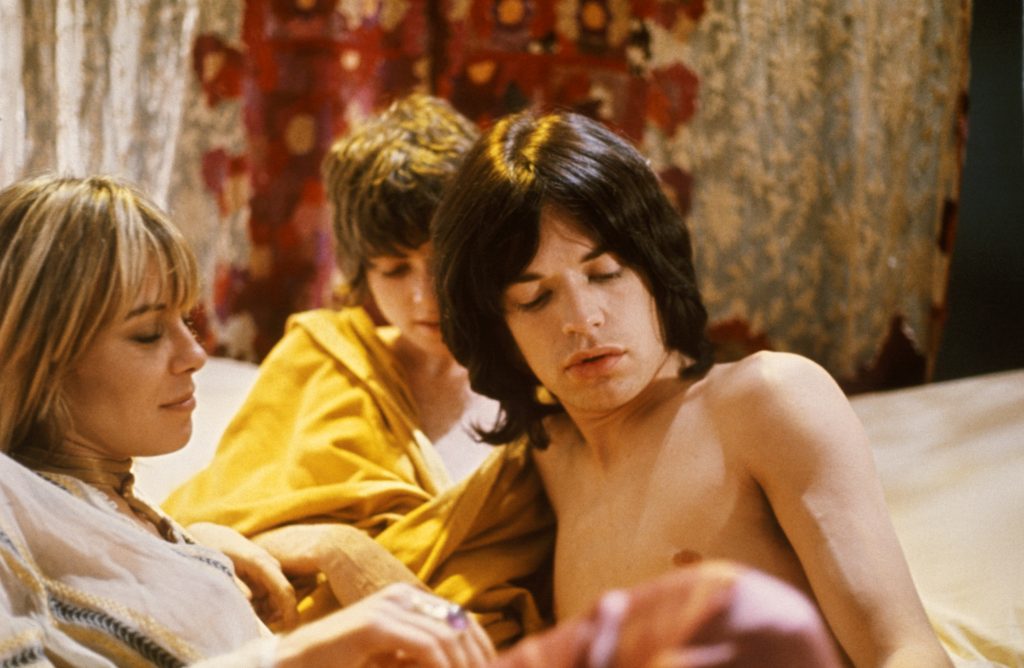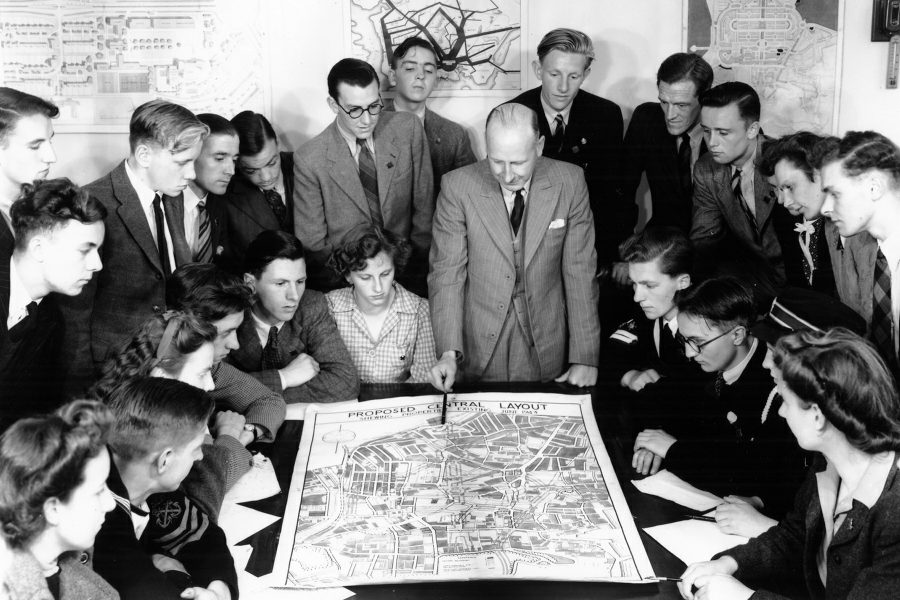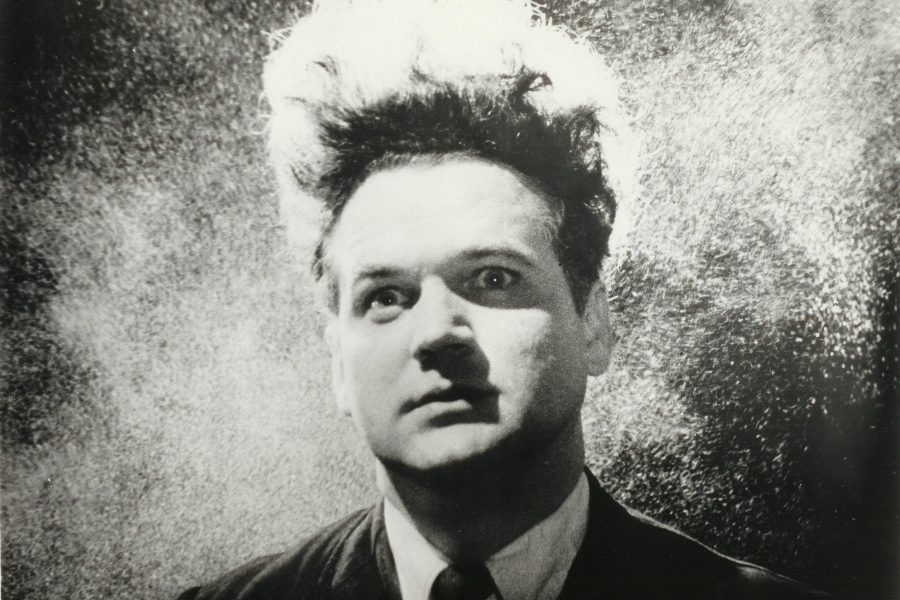Performance (1970), directed by Donald Camell and Nicholas Roeg, follows a violent London gangster on the run as he takes refuge at the Bohemian home of a retired rock star, played by Mick Jagger. The film unflinchingly explores themes of identity and sexuality against a backdrop of grimy 70s London. At the time of its initial release this sparked huge levels of controversy, but the film has since found cult status as one of the first classic British gangster movies.
The film was selected by John Scarlett-Davis. John is an artist, director, writer and editor who was part of the political video-collage ‘Scratch Video’ movement of the early 1980s. He and his husband, fellow artist Volker Stox, live in West Penwith.
JOHN SCARLETT-DAVIS: INTRODUCTION
Just a short intro about me… Looking back, my vocation as an artist working in video was unfortunately quite short-lived. It was the early eighties and poverty drove me hastily into the well remunerated film industry. However, I still managed to win a few awards for my video art and a one-off show at Tate Britain. After over twenty years of directing documentaries and music videos all over the world, I moved to Penzance and here I am!
Performance was filmed in 1968, but not released until 1970. Unusually, there were two directors, Donald Cammell and Nicholas Roeg. Aside from watching the film repeatedly and its subsequent influence on my work, there is a personal connection in that my husband, Volker Stox, worked closely on many occasions as production designer for Donald in the nineties.
Shockingly, the opening sequence showing an all-male jury in the courtroom tells us everything we need to know about how far we have come since this film was made over forty years ago. Women were deemed unsuitable for jury service owing to their frailty and heightened sensitivity. This was the age of the Establishment, crumbling class barriers and the criminalisation of homosexuality for the under 21s. Breaking the law was such fun! Students everywhere were demonstrating against the Vietnam war, there were riots in Paris and millions of workers on strike. The ‘summer of love’ in San Francisco had spread to Europe and you certainly weren’t cool unless you’d tried pot or LSD. Warner Brothers in the USA were looking for a follow-up to the Beatles film A Hard Day’s Night and commissioned Donald Cammell to write a script about swinging London. He’d completed three or four scripts but never directed before. Similarly, Nicholas Roeg had been a cinematographer but never directed a film. Having been hired to make Performance together, they formed a very successful partnership, with Nicholas shooting the film and Donald handling the actors. Up to this point Cammell was a highly regarded portrait artist with studios in London and Paris. He came from a wealthy aristocratic family; his father was a friend of Alistair Crowley and had introduced his handsome son to many celebrated members of society. Donald soon tired of painting and considered film to be the future of artistic expression. With his good looks, wealth and connections, he befriended the Rolling Stones and many of their beautiful hangers-on. One of them, Anita Pallenberg, a German model, co-wrote the script with him in Ibiza and ended up starring in the film along with an androgynous French teenager, Michelle Breton, whom he had met on the beach. Both women succumbed to heroin addiction, with Pallenberg eventually kicking the habit and Breton sadly dying of it. According to some people the film was cursed with dark consequences. James Fox didn’t act again for ten years after the Performance shoot. He subsequently turned to God and joined a religious cult. Tragically, Cammell was to commit suicide two decades later. A film he had just finished was heavily recut by the studio and released straight to video. A lifelong obsession with dark magic and death led him to shoot himself in the head, the rumour being that he asked his wife to hold up a mirror so that he could watch himself die.
Donald was a great believer in collaboration and, just as he enjoyed two or more friends in bed together with him, he also liked to have quite a few members of his gang working with him on the film set. Christopher Gibbs was a famous interior designer who had introduced ethnic fabrics and clothes from Morocco to the Chelsea set. Not only had he led Jagger to Cammell but he also became production designer on the Notting Hill house interiors. The shabby chic style he created for Jagger’s den has never really gone out of fashion. David Litvinov was another gay friend who significantly influenced the look of the film. He was a newspaper gossip columnist who, because of his connections with the East End underworld, became dialogue coach and technical advisor on the film. He was close to Ronnie Kray and painters Francis Bacon and Lucian Freud. The grouping of naked bodies in one of Bacon’s paintings can be spotted in one of the gangster sequences. Litvinov, Bacon and Kray could be seen regularly cruising up and down the Kings Road in an expensive convertible, checking out the young lads. The gangster violence, bondage and sadomasochism can be attributed to his influence on Cammell. An electrician working on the film set said that there were drugs everywhere, the joints were for real and everyone was smoking them, but a cup of tea, no chance!
Warner Brothers hated the film and demanded an immediate re-edit. Nobody could understand any of it. Who was this Borges fellow? What was all this rubbish about identity, duality and annihilation of the self? Why was the bathwater so dirty?! Apparently one executive was sick all over his shoes and another said that he could never let his wife see it. This is what happens, they all thought, when artists are allowed to make a film. Donald spent months on the recut. William Burroughs was a big influence, especially his experimental film The Cut Ups. Since Jagger didn’t appear for the first forty minutes and Warners were scared that his fans would leave the cinema early, Cammell introduced shock jump cuts right at the beginning. The radical editing style of the film has been a major influence on directors ever since. It’s one of Scorcese’s favourite movies. The film studio resisted attempts to burn the negative as someone had suggested, and two years later the film was released. Reviews were unsurprisingly very mixed. Either ‘A masterpiece which demands repeated viewings’ or ‘The most pretentious pile of crap I’ve ever seen . . .’
81 Powis Square, Notting Hill Gate was used for the main exterior. You can see how much the area has gentrified since the film was shot. The grotty once-grand houses were famously divided into tiny bedsit rooms. It’s where signs could be seen in the windows saying ‘no blacks, no Irish, no dogs’. As Fox/Chas talking about the Jagger/Turner house is often quoted, ‘What a freak show, druggies, beatniks, free love, a right pisshole . . .’. I lived for one summer in the early seventies in an infamous gay squat around the corner from Powis Square. Graffitied badly across the front of the building was ‘Eat the Rich’. We were frequently accused of being ‘gender benders’, among other things. When Performance was first shown at the Electric Cinema in the Portobello Road, everything seemed so so familiar!
So, fifty-two years later, we are showing tonight what has become quite a cult film. Surprisingly, considering the number of casualties associated with this movie, Mick Jagger has ended up the big survivor. He’s even been on the cover of Saga magazine. We all thought that it was the beginning of something earth-shatteringly big, but it was to mark the end of an era. So please remember to enjoy it as you would a Jane Austen period piece, but without the bonnets and bows . . .
Delivered on Thursday 10 November, 2022.


